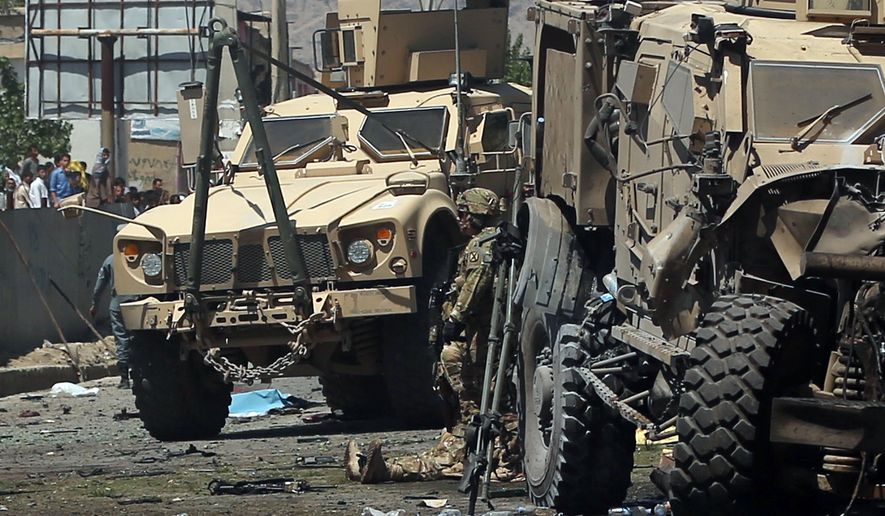Afghanistan defense forces suffered a whopping 59 percent increase in battlefield casualties the past six months compared with 2014, mostly by the national police force, which remains ill-equipped to counter Taliban offenses and/or to hold recaptured territory, says a new Pentagon report.
The downsized U.S.-led coalition has handed over virtually all the fighting to the Afghan Defense and Security Force. It numbers over 300,000, for which the national police make up about half.
Yet as important as the police (ANP) and adjunct local police militias (ALP) are to protecting the regime, the force remains dogged by corruption as well as poor leadership and tactics, states the Pentagon’s latest biannual report on the nearly 14-year war.
“Overall, the ANP and the ALP are the most frequently engaged elements of the ANDSF and continue to suffer the majority of ANDSF casualties, primarily because they are often employed at isolated checkpoints and are not as well armed or trained as the [Afghan Army],” says the “Report on Enhancing Security and Stability in Afghanistan.”
The high casualty rate is one reason President Obama last March decided to slow the pace of U.S. troop withdrawals. The Pentagon will now keep 9,800 personnel in country through this year instead of reducing the force to 5,500. The long-term plan is still to pull all combat forces from Afghanistan by the end of 2016 — a move some national security experts believe will leave the government of President Ashraf Ghani susceptible to overthrow by the Taliban, its allied Haqqani network and al Qaeda as well as by various other militant groups.
The total force is at 90 percent of its authorized strength as soldiers and police quit for a variety of reasons tied to poor leadership and substandard living conditions. There is no legal penalty for a service member to walk away before his or her terms expires.
The Pentagon said the recent battlefield scorecard looks like this: The force did well in Helmand and other provinces in beating back offenses as it displayed new prowess with deploying and coordinating attacks by Russian-made helicopters. However, the Afghan air force is plagued by a shortage of both pilots and air crews.
“The ANDSF continue to demonstrate resilience in the face of heavy fighting and generally have performed well, but have suffered high attrition and casualties,” the Pentagon assessment said.
Units failed to blunt insurgency thrusts in northeastern Kunar and Kunduz provinces near the Pakistan boarder, where the enemy often retreats, regroups and launches again.
The report chastised the police for watching, instead of stopping, the brutal public beating and murder of an Afghan woman accused of burning the Quran last March.
A root problem, the Pentagon says, is the inability to find ethnically diverse military leaders. President Ghani forced the retirement of over 30 generals but then had trouble finding replacements.
“One of the critical shortfalls across ANDSF pillars is a lack of competent leadership in key positions,” the Pentagon said. “This is not due to a shortage of well-trained, experienced, and talented officers, but is instead due to political pressure for ethnic balance and patronage in senior positions. Although some of these leaders are courageous and experienced fighters, they lack formal military education and are unable to lead a large, complex, and technology-enabled modern military force.”
In March 2014 the Afghan government released what were considered the first comprehensive reports on army and police casualties. It said that, in the past 13 years, 13,729 forces had been killed and 16,511 had been wounded. It said most casualties occurred in the past three years as Afghans took on the brunt of the fighting.
The U.S. has suffered 2,355 troop fatalities in the Afghan war, 1,845 of which were killed in action, according to the Pentagon.
• Rowan Scarborough can be reached at rscarborough@washingtontimes.com.




Please read our comment policy before commenting.